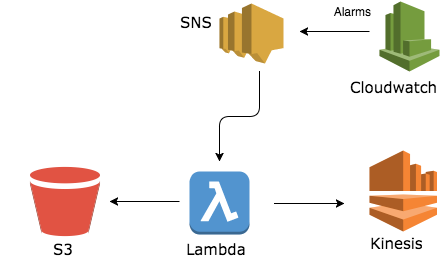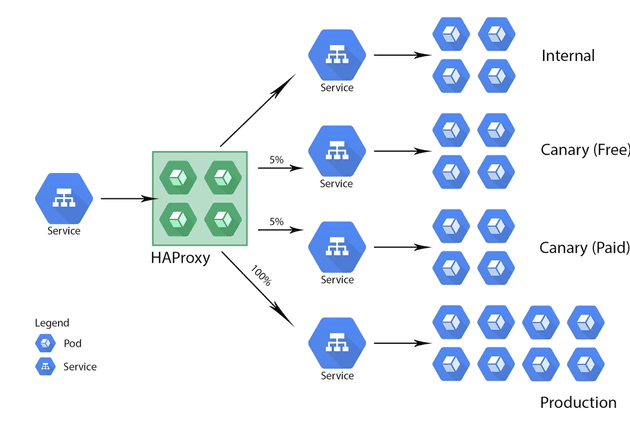Who’s Using AWS Lambda?
AWS Lambda, the serverless computing service on the AWS cloud, was launched in 2014. It quickly became a runaway success for Amazon. It’s one of the fastest-growing products for AWS, with interest on Google roughly quadrupling over the last two years.
It’s popular for good reason, Lambda takes the pain out of having to manage your own servers. It simplifies applications so that code and business logic take centre stage. As part of the AWS suite, it can be powerfully integrated with other AWS services to create complex solutions. (Some of our most popular blogs explores 5 killer use cases for AWS Lambda and how to save up to 10% on AWS by automatically managing instances with Lambda!)
In this article, we examine three examples of how leading organizations are leveraging Lambda to change how they build and deliver applications.
1. Netflix
Netflix has long been the poster child for AWS. It’s not surprising they were one of the first to put Lambda to use. Netflix handles petabytes of video and other data types that need to be streamed to its 50 million customers globally. Their AWS stack is made up of up to 50,000 instances in 12 zones, and 50% of those instances turn over daily, with almost all of them changing each month. To support this scale of operations, the company needs to push the boundaries in the way it builds and manages its infrastructure.
The approach they take is to abstract away the underlying infrastructure as much as possible, so they can focus on their applications instead. Previously, AWS APIs enabled them to control infrastructure programmatically, and fairly efficiently. However, with Lambda, they’ve discovered a new level of abstraction whereby, instead of polling the infrastructure in order to manage and control it, they can use declarative rules-based triggers to make infrastructure automatically adapt to changes in the application layer.
For example, Netflix uses Lambda to execute rule-based checks and routing to handle data stored in S3. Whenever a piece of data is written to S3, a Lambda function decides which data needs to be backed up, which needs to be stored offsite. It then validates if the data has reached its destination, or if an alarm needs to be triggered.
Similarly, with security, Netflix uses Lambda functions to check if new instances created by various services are secure. If vulnerabilities and wrong configurations are spotted, the instance is shut down automatically.
Another way Netflix uses Lambda to enforce better security is with its open source SSH authorization tool BLESS. Bless runs as a Lambda function and integrates with AWS KMS to verify and sign public SSH keys. This is easier than setting up new infrastructure for SSH validation, as the infrastructure is fully managed by AWS. It’s also safer as the keys are active only briefly, and compromised keys are useful for just a short while. Other organisations like Lyft, too, are using BLESS to secure their systems with two-factor authentication.
2. Localytics
The mobile app analytics startup, Localytics, is also making good use of Lambda in their operations. They are big on ChatOps, as it not only quickens operations, but also breaks down silos between teams, thus facilitating the DevOps model. Localytics uses Lambda along with Slack to enable its teams to manage infrastructure more easily.
Localytics leverages the Serverless framework to manage flow of code across the development pipeline. They’ve open-sourced a node.js package to create slackbot Lambda functions easily. Once configured, these Lambda functions can take action on commands like ‘/bot ping’ or ‘/bot echo’. Since their infrastructure is predominantly AWS-centric, Lambda allows them to easily leverage other AWS services and accomplish complex cross-service tasks that would otherwise take a lot of effort. Thus, Lambda helps Localytics simplify its infrastructure management using ChatOps, with better integration across other AWS services.
3. REA Group
For our final example of AWS Lambda in action, we turn to Australia’s leading real estate website, REA Group. They built a recommendation engine for their website, and used Lambda to power this essential feature. This feature involved a million JSON files being processed daily by Lambda. Because of the large volume of data, each Lambda job could run for more than five minutes. So, they decided to break down the data into smaller chunks and then process it using Lambda.
REA Group used a collection of different AWS services like SNS, DynamoDB, Kinesis, and CloudWatch to run the entire operation.
REA uses Cronitor and PagerDuty for monitoring, and CloudWatch Logs for logging.
Conclusion and Resources
As these examples make clear, AWS Lambda is powering unique use cases in enterprises across the world. From running core cloud platforms to extending legacy applications, and even enabling modern features like recommendation engines—Lambda is versatile and flexible. As you look to expand your product’s capabilities, or completely overhaul the way it performs tasks, do consider AWS Lambda. It’s a lot easier to manage than regular cloud instances, and opens up a world of possibilities in the form of AWS’ various services.
Want to learn more? Check out AWS’s own suggested use cases for AWS Lambda or our white paper: An Introduction to Serverless Computing with AWS Lambda.
Trying to make sense of serverless?
We can help!
Serverless computing enables you to concentrate on differentiating application code, rather than managing middleware, infrastructure and other commodities. To learn more, check out our whitepaper: Introduction to Serverless Computing with AWS Lambda.







